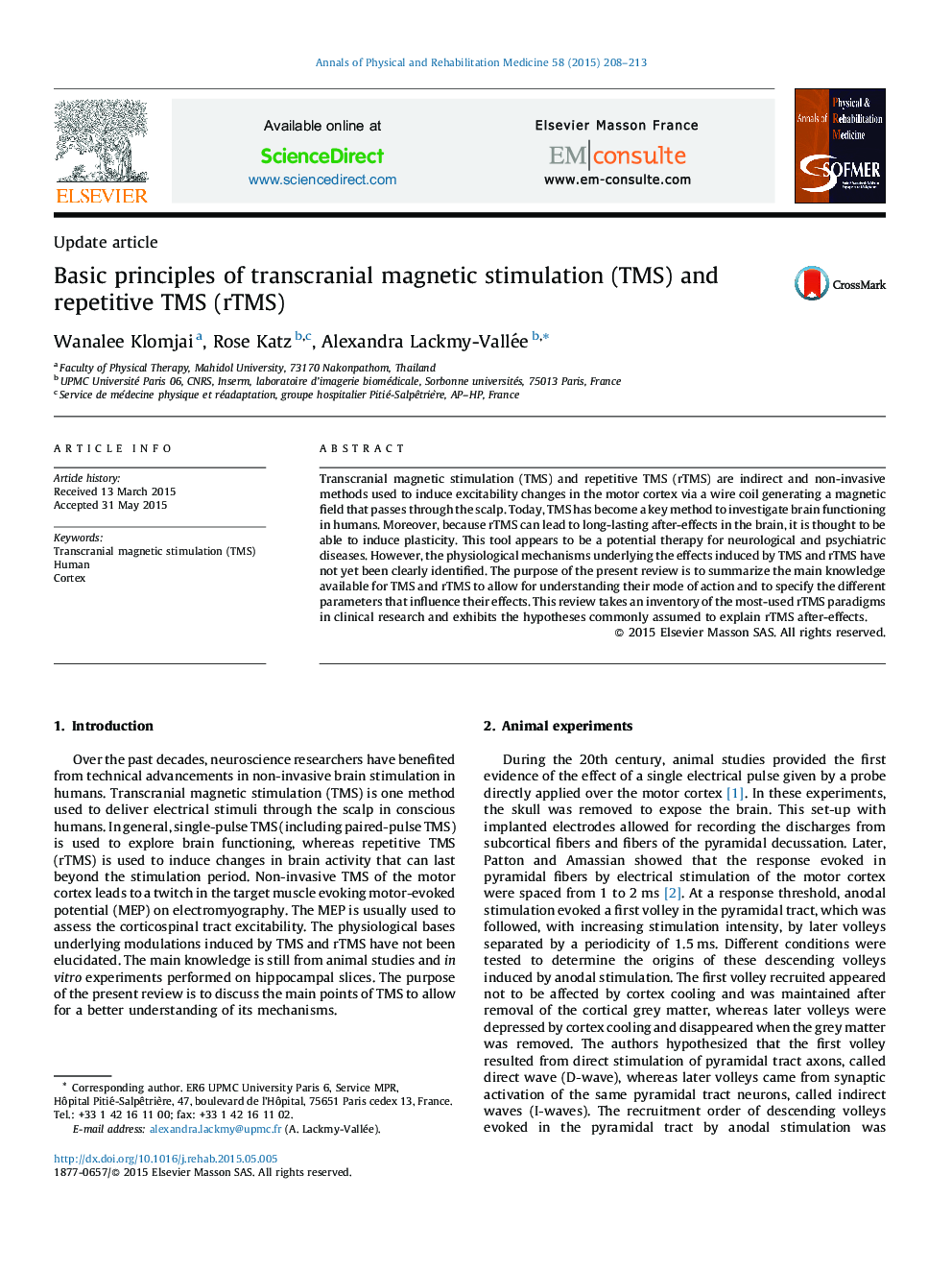| Article ID | Journal | Published Year | Pages | File Type |
|---|---|---|---|---|
| 4040753 | Annals of Physical and Rehabilitation Medicine | 2015 | 6 Pages |
Transcranial magnetic stimulation (TMS) and repetitive TMS (rTMS) are indirect and non-invasive methods used to induce excitability changes in the motor cortex via a wire coil generating a magnetic field that passes through the scalp. Today, TMS has become a key method to investigate brain functioning in humans. Moreover, because rTMS can lead to long-lasting after-effects in the brain, it is thought to be able to induce plasticity. This tool appears to be a potential therapy for neurological and psychiatric diseases. However, the physiological mechanisms underlying the effects induced by TMS and rTMS have not yet been clearly identified. The purpose of the present review is to summarize the main knowledge available for TMS and rTMS to allow for understanding their mode of action and to specify the different parameters that influence their effects. This review takes an inventory of the most-used rTMS paradigms in clinical research and exhibits the hypotheses commonly assumed to explain rTMS after-effects.
